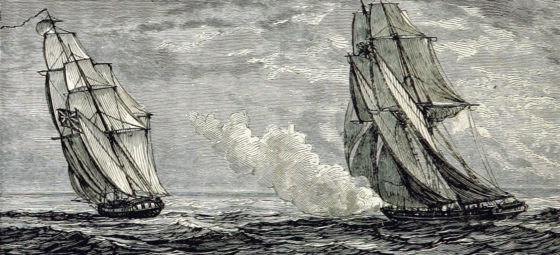
“The poster depicts a night action in which an armada of airships bomb a small town while artillery batteries on the ground furiously try to fend off the attacking Zeppelins.”
By Harry Smee and Henry Macrory
ON DEC. 17, 1903 the Wright brothers made the first powered flight, famously managing to travel a distance of 40 yards at an altitude of about 10 feet.
Fewer than four years later H.G. Wells wrote his novella War in the Air describing a fleet of German airships flying across the Atlantic Ocean and destroying the United States. Published in 1908, its release happened to coincide with troubling announcements from German officials threatening to use the new hydrogen-filled Zeppelin airships to wage future war. Both the book and Berlin’s proclamations caused a stir on both sides of the Atlantic.

Public interest was so high in the future of aerial warfare that the world famous British fireworks magnate Arthur Brock spotted an opportunity.
Dubbed the “Fire King” by the press, Brock was the seventh generation of pyrotechnist to run his family enterprise since it launched in the 17th century. Capitalizing on the public’s fearful fascination with flying war machines Brock made a mock Zeppelin attack the centrepiece of his 1909 summer season and one of his world-famous Crystal Palace fireworks shows in London.
One of the best-known features of these displays were the huge ‘set-pieces,’ which sometimes measured up to an eighth of a mile in length and up to 100 feet in height. These structures mounted thousands of individual fireworks linked by miles of almost instantaneous fuse to create, when knitted together, vast vertical landscapes up to 1.5 acres in size.
This link is to a short film taken c.1930 at the Crystal Palace in London. Towards the end is a Brock’s “set-piece” showing part of the Battle of Jutland, similar to what the public would have seen in 1909. Note the aeroplane rising and attacking the Zeppelin at 2:48 of the clip.
Over many decades, Brock’s fireworks shows recreated both major historic events, like the Battle of Trafalgar, as well as ‘breaking news,’ such as Battle of Manila Bay. Long before the advent of cinema or television, the spectacles mesmerized the masses.
To promote their shows, artists employed by Brock’s would paint lavish posters featuring depictions of the upcoming displays. Such was the case in late 1908 when the family commissioned illustrators to build some buzz for its “sensational” mock “aerial battle.”
The poster depicts a night action in which an armada of airships bomb a small town. The earliest ideas of fighter aircraft do their best to defend in the air and artillery batteries on the ground try furiously to drive off the attacking Zeppelins. The result is believed to be one of the, if not THE, earliest artistic representation of recognizable air combat ever painted.* The image appears on the dustcover of my new book Gunpowder & Glory, the first biography of Frank Brock, Arthur’s eldest son.
Frank Brock would go on to invent many thorns with which to deflate the German Kaiser’s attempt to control Europe and in a forthcoming edition of Military History Now Frank’s major achievements will be described, including his game-changing explosive bullet that was to give the Allies one of the best feel-good moments of that terrible conflict and to deny the Kaiser’s dream of establishing air supremacy.
 Harry Smee is the coauthor of Gunpowder and Glory: The Explosive Life of Frank Brock OBE. The former director of Brock’s Fireworks, he is Frank Brock’s grandson.
Harry Smee is the coauthor of Gunpowder and Glory: The Explosive Life of Frank Brock OBE. The former director of Brock’s Fireworks, he is Frank Brock’s grandson.
* There were some images in H.G. Wells’ War in the Air, but working only on imagination in the very earliest days of manned flight, they were not recognizable as aeroplanes or Zeppelins, as the flying machines in the Brock’s poster are.
© Harry Smee and Henry Macrory 2020









